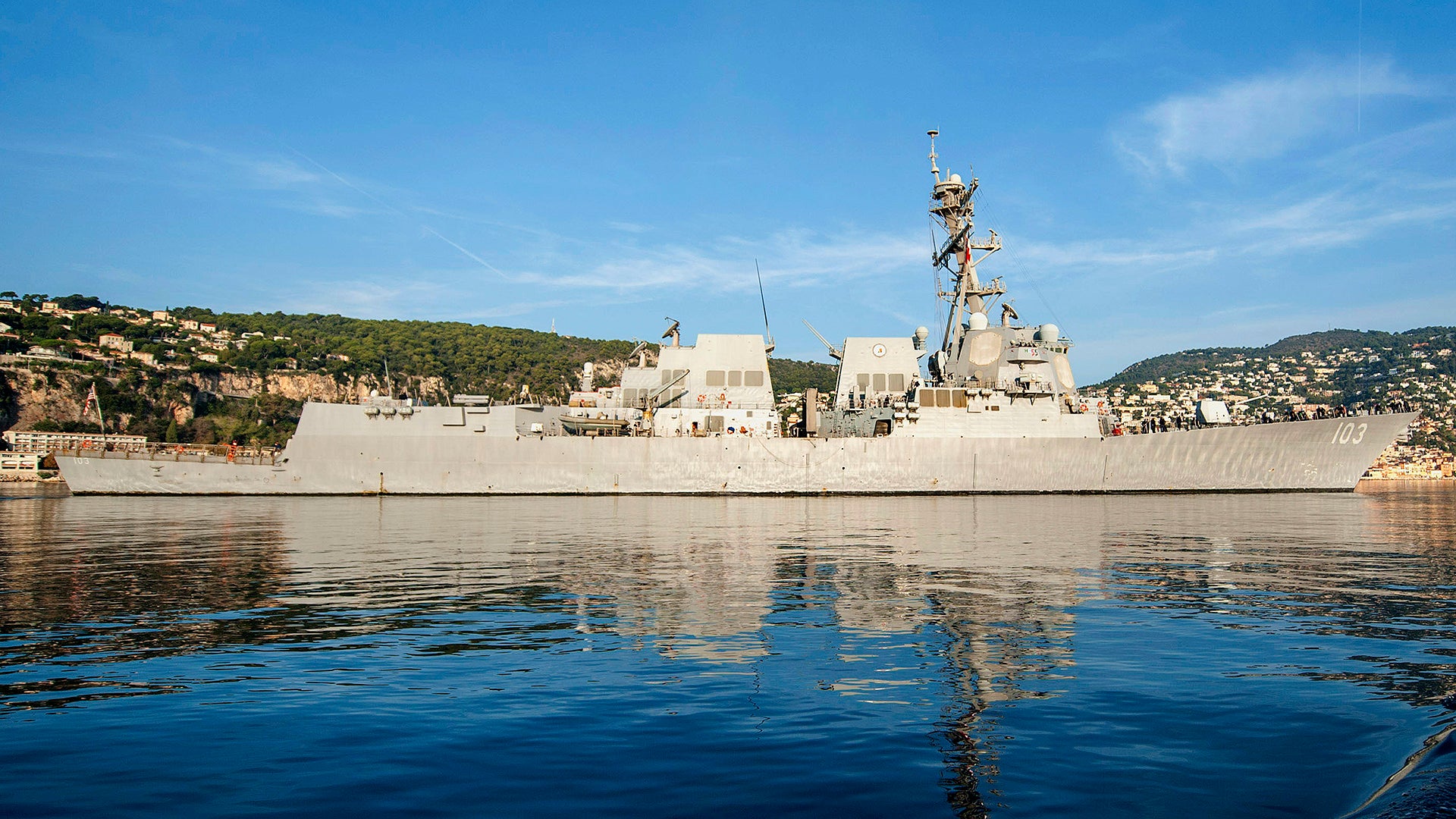The seagoing service has officially cancelled its plans to retrofit 34 of its Arleigh Burke class destroyers with hybrid-electric drives. The modified propulsion systems were supposedly going to enhance endurance and reduce fuel consumption, among other advantages.
I wrote about the ambitious plan back in 2015, stating:
“Starting next year, the Navy will retrofit 34 of its newest Arleigh Burke Class destroyers with an electric motor tied to the ship’s main reduction gear, which will be able to propel the ship at speeds below about 13 knots. At higher speeds, where the ship’s LM-2500 gas turbines are more efficient, the ships will run on traditional power.
The end effect will be better endurance for typical destroyer missions, such as executing ballistic missile defense, where cruising at lower speeds are usually standard operating procedure. The Navy says that using the system 50 percent of the time will result in as much as two and a half days of extra time between refueling and thousands of barrels of fuel saved during a typical deployment.
The Navy plans on initially outfitting a pair of destroyers with the system in 2016 and four ships a year after that.”
But in the Pentagon’s 2019 budget all its funds for program have been cut, as Defense News’s David Larter points out. So far the Navy has spent $52M on the initiative with the total cost to retrofit the 34 destroyers set at $356M.

The reasoning behind the abandonment of a program the Navy had put a high priority on just a couple years prior is multi-fold. The Navy says it has other priorities that are more pressing than the hybrid drive upgrade program, and that they have no intention of spinning the program back up in the future—at least at this time. As such, USS Truxtun (DDG-103) will be the only existing Arleigh Burke class destroyer with the system fitted and will serve as something of a test ship for the retrofitted hybrid electric drive concept going forward.

The other reason for axing the hybrid electric drive retrofit program is that it seems to have run into some technological and engineering hurdles that simply made it less viable and logical without further developmental investment. These ships have three generators, two of which are operational at any given time. When steaming under 13 knots on the hybrid drive’s electrical power, the load on those two active generators is extreme, making the ship vulnerable to blackouts and taxing its electrical distribution system to the max. Guided missile destroyers are notoriously electricity hungry, with their powerful Aegis radar system and other sensors and combat systems requiring lots of juice, especially in combat situations.
“At that point you are a light switch flipping on away from winking out the whole ship,” a Navy official told Larter in reference to the hybrid drive system.
Also, because the two running generators have to be pushed so hard while the hybrid electric drive is active, the fuel savings has turned out to be less impressive than originally envisioned.

Still, the technology is the future of naval propulsion, and various versions of it are in use on commercial ships around the world, as well as on the latest ‘Gator Navy’ amphibious flattops. The Zumwalt class destroyers use an even more elaborate electrical drive system for propulsion, but to our knowledge the upcoming Flight III Arleigh Burke class destroyers will have increased power capacity to support its powerful SPY-6 radar and future growth potential, but that will come in the form of three uprated generators, not a hybrid electric drive system.

But designing a ship around this propulsion concept is one thing, retrofitting it back into existing vessels—especially combat ships with all sorts of unique demands and constraints—is another.
In the end it sounds like the Navy made the right call. If Truxtun can be tweaked to make the system work within acceptable tolerances over time than maybe there is a case to be made for the retrofitting plan once again. In the mean time the Navy does have other priorities, and the idea of actually handicapping the backbone of their surface combatant fleet with this still temperamental technology is not worth the rewards.
In fact it is refreshing seeing the service try something ambitious and reevaluate before doubling down on a very risky and expensive concept with questionable returns. Such a move could very well be the product of recent hard-learned lessons from other higher-profile programs.
It will be interesting to see how Truxtun adapts to their new propulsion system and how that ship’s crew will cope with its current limitations.

Contact the author: Tyler@thedrive.com
